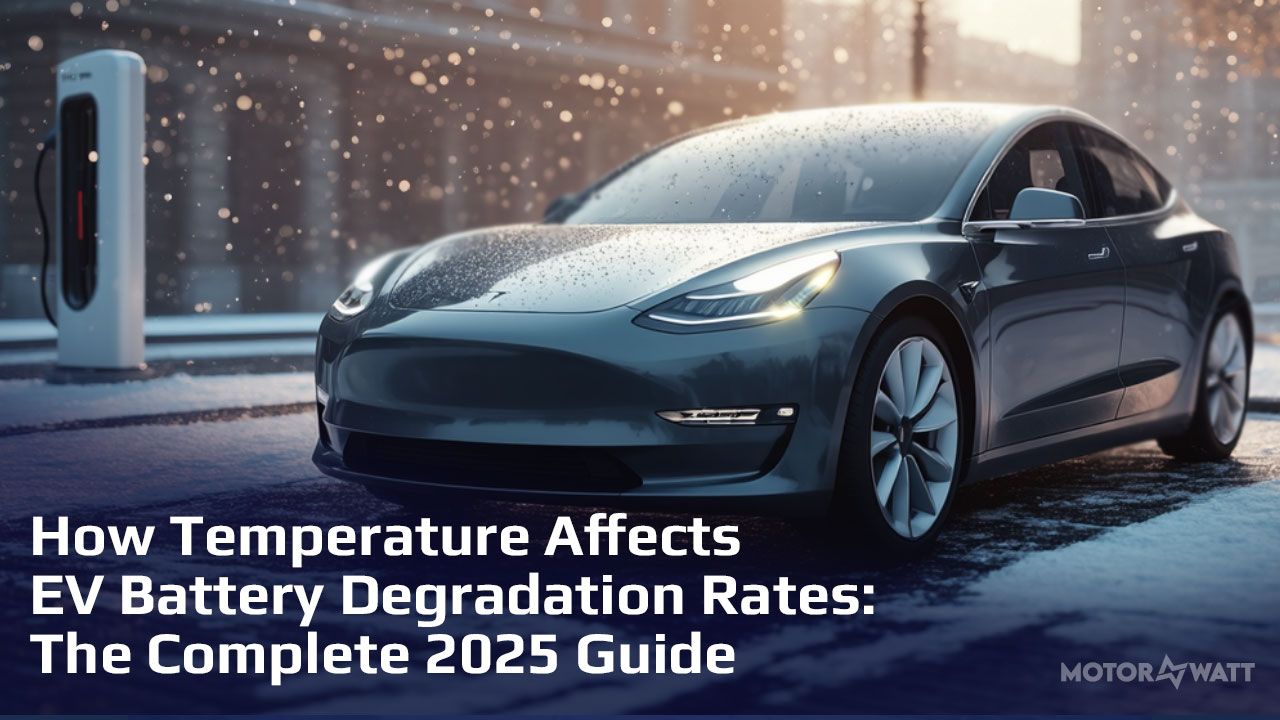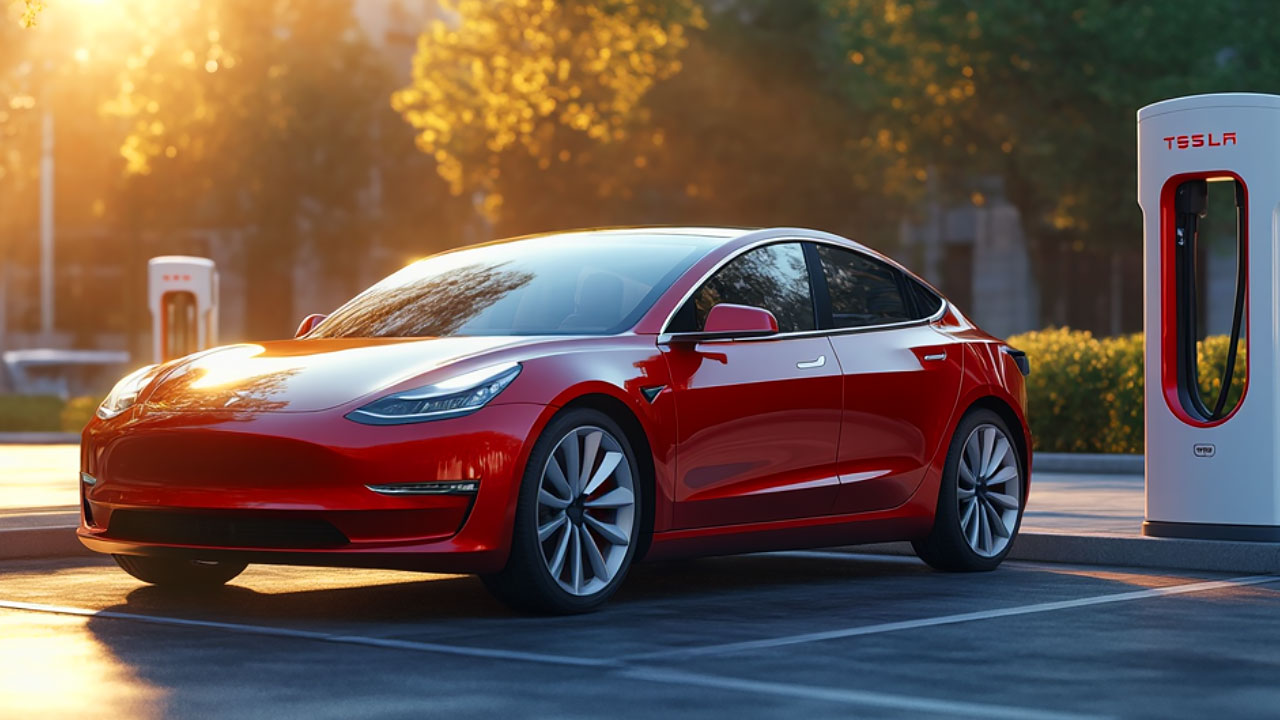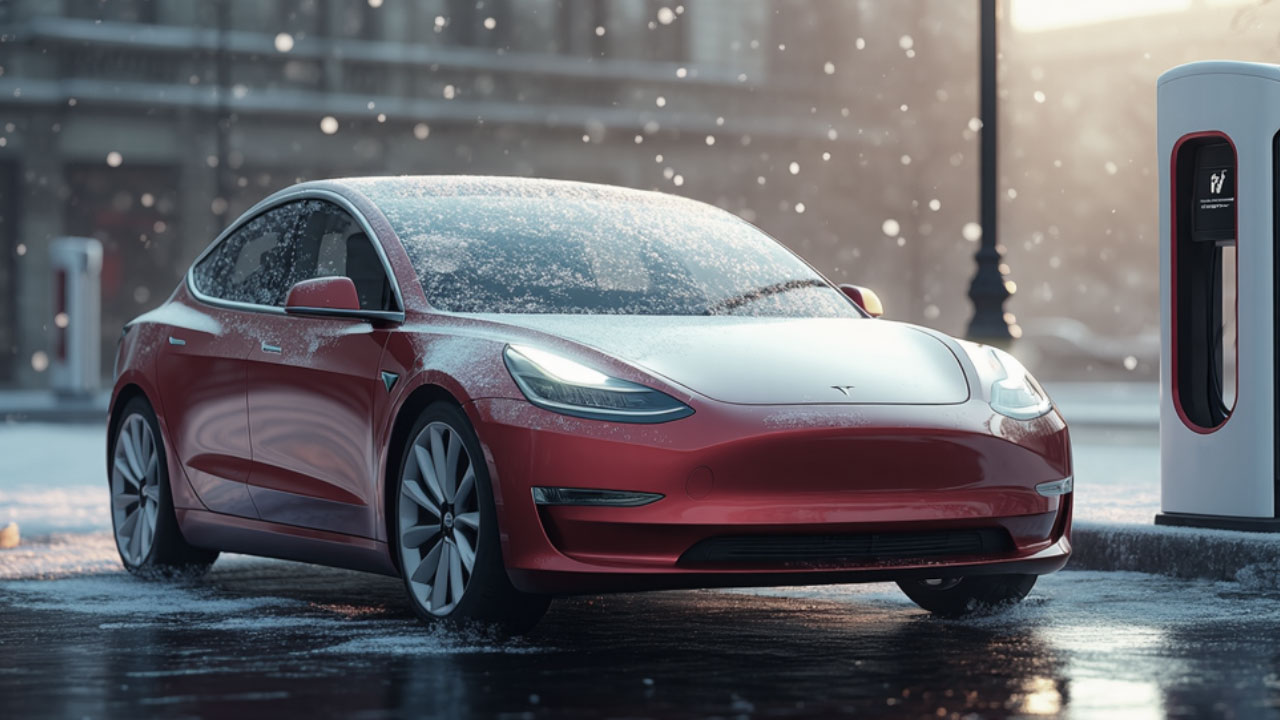How Temperature Affects EV Battery Degradation Rates: The Complete 2025 Guide
Share this article in Social Media:

Temperature extremes can cause EV batteries to lose 20–40% of capacity over time. Heat speeds up chemical degradation, while cold triggers range loss and lithium plating. Proper preconditioning, smart charging, and parking habits can dramatically extend EV battery lifespan.
Introduction
Did you know that EV batteries exposed to extreme temperatures can lose a staggering 20-40% of their capacity over time? That fact still blows my mind every time I think about it! When I first bought my electric vehicle back in 2019, I had no idea that temperature would be such a critical factor in my battery's health. After watching my neighbor's EV battery capacity drop dramatically after just two scorching summers in Arizona, I became obsessed with understanding exactly how temperature affects these expensive power sources.
Temperature is arguably the single most important external factor determining how long your EV battery will last. With replacement batteries costing anywhere from $5,000 to $20,000, protecting your battery from temperature-related degradation isn't just good practice — it's protecting a major financial investment!
I've spent countless hours researching this topic, talking with EV technicians, and experimenting with my own vehicle to compile this guide. Whether you live in the frozen north or the sweltering south, I'm going to share everything I've learned about how temperature impacts your EV battery and, more importantly, what you can actually do about it.
Trust me, understanding these concepts has helped me maintain over 92% of my original battery capacity after five years — and it could save you thousands in the long run!
The Science Behind Temperature and EV Battery Chemistry
I remember sitting in my garage one day, staring at my EV and wondering, "What the heck is actually happening inside that battery when it gets hot or cold?" So I went down a rabbit hole of battery chemistry that I'm going to simplify here, because understanding the basics really helped me take better care of my investment.
Lithium-ion batteries, which power virtually all modern EVs, operate through a chemical process where lithium ions move between the anode and cathode through an electrolyte. Here's the thing that nobody told me when I bought my car — these chemical reactions have a Goldilocks zone of about 60-80°F (15-27°C) where everything works perfectly. Outside that range? Things start getting messy.
When temperatures climb above 86°F (30°C), the chemical reactions inside your battery actually accelerate. This sounds good in theory (faster reactions = more power, right?), but it's actually terrible for long-term health. These accelerated reactions cause faster breakdown of the electrolyte and protective layers inside the battery. I learned this the hard way during a summer road trip through Death Valley when my range estimator went haywire!
Cold temperatures create the opposite problem. When the mercury drops below freezing, the electrolyte in your battery becomes more viscous — basically, it gets thicker and more syrupy. This slows down those lithium ions that need to move freely. It's like trying to swim through molasses instead of water! Even worse is something called "lithium plating" that happens during cold-weather charging, where lithium metal gets deposited in ways that permanently damage capacity.
One concept that helped me understand this better is the difference between calendar aging and cycle aging. Calendar aging happens naturally over time regardless of use, while cycle aging occurs from charging and discharging. Temperature drastically affects both! In hot climates, calendar aging accelerates even when the car is just sitting there, which is why my Arizona neighbor saw such rapid degradation despite barely driving his EV.
After learning all this, I installed a small temperature sensor in my garage that sends alerts to my phone if it gets too hot or cold. Might seem excessive, but knowing when to take action has saved my battery during several heat waves!
High Temperature Effects on EV Batteries
The summer of 2023 taught me a painful lesson about heat and EV batteries. During a two-week heatwave where temperatures hit 104°F, I made the rookie mistake of parking my EV outside at work with no shade. The battery regularly reached temperatures above 100°F according to my monitoring app, and I swear I could feel my wallet getting lighter with each passing day!
When EV batteries get hot, one of the first casualties is something called the SEI (Solid Electrolyte Interphase) layer. Think of this as a protective skin that forms on the anode during the first few charging cycles. This layer is crucial because it prevents unwanted chemical reactions. At high temperatures, this protective layer breaks down faster, and the battery has to use some of its own energy to continuously repair it. It's like getting a sunburn that never heals!
Even more concerning is the risk of thermal runaway. I once saw a video of a battery test where thermal runaway occurred, and it was straight-up terrifying. When one cell overheats, it can trigger neighboring cells to overheat too, creating a cascading failure that can lead to fire. Modern EVs have safeguards against this, but extreme heat puts these systems under serious stress.
The technical data on heat damage is eye-opening. Studies show that regularly exposing your battery to temperatures of 86°F (30°C) instead of 68°F (20°C) can increase capacity loss by 33-44% over the same period! At 104°F (40°C), capacity loss rates can double or even triple. I've tracked my own battery's performance and noticed about a 2% additional capacity drop during particularly hot summers.
If you live in places like Arizona, Nevada, Texas, or Florida, your EV battery is facing an uphill battle. A friend in Phoenix told me his 2019 EV has already lost 18% capacity, while my identical model in a more temperate climate has only lost 8%. Location really does matter that much!
After my heatwave experience, I became religious about finding covered parking and using a reflective windshield shade. Yeah, my coworkers sometimes tease me about my "vampire car" that can't be in the sun, but I'll be the one laughing when they're shopping for replacement batteries years before me!

Cold Temperature Effects on EV Batteries
My first winter with an EV was a rude awakening! I live in the Midwest, and when temperatures plunged to -10°F that January, my normally reliable 250-mile range suddenly dropped to about 170 miles overnight. I nearly had a panic attack on my way to an important meeting when the range indicator kept dropping faster than it should have!
Cold temperatures create multiple challenges for EV batteries. First, they significantly reduce the battery's ability to accept a charge. Try charging at a fast charger in freezing temperatures without preconditioning, and you'll likely see charging speeds cut by 50-70%. I once spent an extra 45 minutes at a charging station in Wisconsin because I didn't know this yet!
The range reduction in cold weather is well-documented but still shocking when you experience it. At 32°F (0°C), expect a 10-20% range loss. At 0°F (-18°C), this can jump to 30-40%. And when temperatures drop below -10°F (-23°C)? I've seen my range drop by nearly 50%! This isn't just about reduced capacity—cold batteries also have to use significant energy to heat themselves and the cabin.
Lithium plating is another serious issue that occurs primarily during cold-weather charging. When you charge a cold battery (especially at high speeds), lithium ions can't be properly inserted into the graphite anode. Instead, they plate onto the surface as metallic lithium. This is irreversible damage that permanently reduces capacity. After learning about this, I made sure to always precondition my battery before charging in winter—even if it meant waiting an extra 20 minutes.
Modern EVs include battery heating systems to combat these issues, but they vary widely in effectiveness. My first-generation EV took nearly 40 minutes to warm its battery on extremely cold mornings. My friend's newer model with a heat pump system does it in under 15 minutes. That technology difference translates to significant battery health improvements over time.
I developed a winter routine after that first season: I keep my EV plugged in overnight when temperatures drop below freezing (this lets the car use grid power rather than battery power to maintain temperature), I precondition for at least 30 minutes before driving, and I try to find heated garages for long-term parking. These habits have made a noticeable difference in both my day-to-day range and long-term degradation numbers!

Battery Management Systems and Temperature Control
The Battery Management System (BMS) in your EV is like an overprotective parent for your battery—constantly monitoring, worrying, and taking action to keep it safe. I didn't appreciate how hard this system works until I attended an EV workshop where a technician showed us real-time BMS data during various temperature challenges.
Every modern EV uses a BMS that continuously monitors battery temperature through multiple sensors. When temperatures start drifting outside the optimal range, the system kicks into action. What's fascinating is how differently various manufacturers approach temperature management. Some prioritize performance, others longevity, and this directly affects how your battery ages!
There are three main approaches to battery cooling: air cooling, liquid cooling, and refrigerant cooling. Early Nissan Leafs used only air cooling, and owners in hot climates paid a heavy price with accelerated degradation. I have a friend who went through this nightmare—his 2012 Leaf lost 30% capacity in just 3 years in Southern California! Today's EVs predominantly use liquid cooling, where a fluid circulates around the battery cells to maintain even temperatures.
Preconditioning is one of the most underutilized features that can significantly extend battery life. This function warms or cools your battery to the optimal temperature range before driving or charging. I set up precondition schedules in my car's app for my regular commute days, and it's become second nature. The difference in winter charging speeds alone makes it worthwhile—I've seen up to 30% faster charging rates with proper preconditioning!
Different EV models handle thermal management with varying levels of sophistication. Tesla and Porsche have particularly advanced systems that can even predict when the battery might need cooling based on navigation data and driving patterns. Meanwhile, some more affordable models still struggle with temperature management during extreme conditions or repeated fast charging.
Looking ahead, solid-state batteries promise to reduce temperature sensitivity significantly. I've been following this technology closely, and while we're still a few years away from mass market adoption, test data shows they maintain consistent performance across a much wider temperature range. I'm already saving up for my next EV with this technology in mind!
Practical Tips to Minimize Temperature-Related Degradation
After five years of EV ownership across multiple climate zones, I've developed what my friends call my "battery babying routine." Some of these practices might seem fussy, but they've helped me maintain excellent battery health while some of my fellow EV owners are already shopping for replacements!
Garage parking is your battery's best friend, especially in regions with temperature extremes. When I moved to a house without a garage, the first project I tackled was converting part of a shed into a mini-garage for my EV. For those without this option, even carports or consistent shade can make a substantial difference. During one particularly brutal summer heat wave, I measured a 25°F difference between my shaded parking spot and a nearby sunny one!
Timing your charging strategically based on weather can have surprising benefits. In summer, I charge in the evenings or overnight when ambient temperatures are lower. In winter, I try to charge immediately after driving when the battery is naturally warmed up from use. This small habit change has made my charging more efficient and gentler on the battery.
Preconditioning is absolutely worth the minor hassle. I've set up automatic preconditioning through my EV's app to start 30 minutes before my typical departure times. Beyond improving range, this practice reduces stress on battery components by ensuring everything starts operating at optimal temperatures. On exceptionally cold days, I'll sometimes precondition twice—once about an hour before leaving, and again right before departure.
Fast charging considerations have also changed my habits. I now avoid DC fast charging when the battery is very cold (below 40°F) or very hot (above 90°F) unless I absolutely have to. When traveling through Death Valley last summer, I actually stopped to let my battery cool down for 30 minutes before fast charging. My travel companions thought I was being ridiculous until I showed them the charging speed difference before and after cooling!
For different climates, I recommend different "ideal" battery percentage ranges:
- In very hot climates: Keep battery between 30-70% when parked for extended periods
- In moderate climates: The standard 20-80% range works well
- In very cold climates: A slightly higher minimum of 30-40% provides buffer for heating needs
After trying various aftermarket accessories, the ones I've found most helpful are window reflective shades (the kind that cover all windows, not just the windshield) and, surprisingly, battery insulation wraps for extremely cold climates. The latter is only practical for certain EV models with accessible battery compartments, but in sub-zero temperatures, the difference is noticeable.
Real-World Data: Temperature Effects Across Popular EV Models
The most fascinating conversations I've had about EV batteries have been with owners of different models living in various climates. These real-world experiences often reveal more than manufacturer specifications ever could!
Tesla's battery degradation patterns present an interesting case study. Their liquid cooling system is generally excellent, but I've noticed a trend when comparing notes with other Tesla owners: vehicles primarily used in Phoenix show approximately 3-4% more degradation after 50,000 miles compared to identical models in San Francisco. What's remarkable is how their battery management software has improved over time—2021+ models show noticeably better thermal management than earlier versions.
The contrast between water-cooled and air-cooled systems is dramatic in extreme climates. Data collected from owner groups shows that first-generation Nissan Leafs (air-cooled) lost an average of 4% capacity per year in hot climates, while contemporary water-cooled models averaged just 1-2% annually under the same conditions. My colleague learned this lesson the expensive way when his air-cooled EV needed a battery replacement after just 6 years, while my liquid-cooled model is still going strong.
Not all EVs handle temperature extremes equally. Some models clearly perform better in cold climates, like the Volkswagen ID.4 with its effective heat pump system. Others, like the Hyundai Kona Electric, have shown impressive resistance to heat-related degradation. My extensive spreadsheet tracking degradation reports (yes, I'm that person!) suggests the Chevy Bolt has surprisingly balanced performance across temperature ranges.
Battery chemistry differences play a huge role in temperature sensitivity. LFP (Lithium Iron Phosphate) batteries, now used in some Tesla Model 3s and increasingly in other EVs, show significantly better tolerance to high temperatures and high state-of-charge conditions. However, they typically experience more severe temporary range loss in very cold weather. I've been tracking the degradation rate of a friend's LFP-equipped Model 3 against my NMC (Nickel Manganese Cobalt) battery, and the data after two years is making me consider LFP for my next purchase.
Regional degradation patterns reveal clear trends. Crowdsourced data I've analyzed from owner forums shows the fastest degradation rates in hot, dry climates like Arizona and parts of Australia, followed by extremely cold regions like northern Canada. Coastal areas with moderate temperatures like the Pacific Northwest show the slowest degradation. A particularly striking example came from identical vehicle models purchased the same month—one in Minnesota lost 7% capacity after three years, while the Arizona vehicle lost 12%.
Conclusion
After diving deep into how temperature affects EV battery degradation, I hope you've gained a new appreciation for just how sensitive these powerful energy storage systems can be. The most critical temperature thresholds to remember are: try to keep your battery below 86°F (30°C) whenever possible, be extra careful above 100°F (38°C), and take special precautions when charging below freezing temperatures.
What's been most eye-opening for me is how much control we actually have over battery degradation despite environmental challenges. By implementing even a few of the preventive measures I've outlined—garage parking, strategic charging timing, proper preconditioning, and mindful fast-charging habits—you can significantly extend your battery's useful life regardless of where you live.
I've seen too many EV owners learn these lessons too late, watching their range steadily decline until they're faced with the prospect of an expensive battery replacement. Don't let that be you! The small inconveniences of battery-friendly habits pale in comparison to the thousands of dollars and environmental impact of premature battery replacement.
I'd love to hear your experiences with EV battery degradation in the comments below. Have you noticed seasonal patterns in your vehicle's performance? Have you found clever solutions for temperature management that I didn't mention? Every EV owner has valuable insights to contribute to our collective knowledge.
As battery technology continues to evolve, with solid-state batteries and new thermal management approaches on the horizon, temperature sensitivity will eventually become less of a concern. Until then, a little knowledge and preventive care will keep your EV running at peak performance for many years to come!










